10 Toxic Foods that You Should Not Give to Your Dog
It is very common to find dogs sitting next to the dinner table, looking up longingly to entice their masters to give them a quick bite of food off their plates. Dog lovers feeding their furry friends table scrapes or small treats is common practice.
If you are among this group of pet lovers who can’t resist the puppy dog eyes at mealtime, it’s important to understand that you may be putting your beloved pet in danger by feeding them certain leftovers.
A dog is part of the family, but that doesn’t mean they can share all the food you eat. Many foods are bad for them. The dietary needs of humans and dogs are different. In fact, foods that are healthy for humans may not have the same effect on dogs.
Being a dog owner, you must become aware of human foods that are harmful to your dog’s health.
Here are the top 10 toxic foods that you should not give to your dog.
1. Chocolate
Chocolate, especially dark chocolate, is one of the most well-known toxic foods for dogs.
A 2009 study published in Interdisciplinary Toxicology reports that chocolate ingestion is toxic to all species, especially smaller dogs. Dark chocolate is more toxic than milk chocolate and white chocolate.
The study also says that the toxic dose depends on factors like whether the dog ate the chocolate on an empty stomach, if the dog is particularly sensitive to chocolate and the type of chocolate the dog ate.
The toxic elements in chocolate are the methylxanthines theobromine (3, 7-dimethylxanthine) and caffeine (1, 3, 7-trimethylxanthine), which affect the heart and nervous system indogs.
Signs of a problem usually occur within 6 to 12 hours of the dog ingesting the chocolate. Initially, the signs include vomiting, diarrhea, abdominal distension and restlessness. If not treated timely, chocolate ingestion may even result in potentially life-threatening cardiac arrhythmias and central nervous system dysfunction.
As there is no antidote to theobromine, it becomes very important to remove the chocolate from the dog’s stomach, either by emesis or gastric lavage. Experts even recommend activated charcoal, which can be given either orally or through a stomach tube.
In addition to chocolate, avoid giving caffeinated beverages like tea, coffee and hot chocolate to your beloved dog.
2. Onions
Onions contain toxic components that may damage the red blood cells and provoke hemolytic anemia accompanied by the formation of Heinz bodies in erythrocytes of animals like dogs and cats.
All forms of onions, including dehydrated, raw or cooked onions, or any kind of table scraps containing cooked onions, are toxic to dogs. Initial symptoms of toxicity include vomiting and diarrhea, which can progress to anemia, weakness, labored breathing and even becoming devastatingly deadly.
A 1985 study published in Veterinary Pathology reports that onion ingestion causes oxidative erythrocyte injury as evidenced by the production of Heinz bodies. Heinz bodies are erythrocyte inclusions that form as a consequence of irreversible oxidative denaturation of hemoglobin.
Later, a 2008 study published in the Journal of Veterinary Pharmacology and Therapies confirms that onion poisoning in dogs induces hemolysis.
A 2011 study published in the Journal of Venomous Animals and Toxins including Tropical Diseases reports that all Allium species and their derivatives can be toxic to dogs and cats. Other foods in the Allium species include garlic, chives and leeks.
3. Macadamia Nuts
Macadamia nuts also top the list of foods that can be devastating for dogs.
In certain cases, after ingesting macadamia nuts, your furry friend may suffer from a series of symptoms, which includes a rise in body temperature, faster heartbeat, weakness and vomiting. In severe cases, dogs may even suffer from paralysis.
A 2000 study published in Veterinary and Human Toxicology reports that the ASPCA National Animal Poison Center managed 29 cases of ingestion of commercially available macadamia nuts in dogs during a five-year period.
The study reports that signs of macadamia nuts toxicity include (from most to least frequent) weakness, depression, vomiting, ataxia (abnormal, uncoordinated movements), tremors, hyperthermia (body temperature above normal), abdominal pain, lameness, stiffness and pale mucous membranes. The onset of clinical signs occurred in less than 12 hours after ingestion in 79 percent of the cases.
4. Grapes and Raisins
Grapes and raisins are beneficial for humans, but they are not that beneficial for your four-legged friends.
Grapes and raisins cause toxicity in dogs due to the fungicide, herbicide or pesticide contamination present in them. Other possible causes include heavy metal contamination, high concentrations of vitamin D, and fungus or mold contamination.
Symptoms start around 24 hours after ingestion. Initial symptoms of toxicity from grapes include vomiting, diarrhea, loss of appetite, weakness, abdominal pain and dehydration. If not treated timely, it can even lead to something as extreme as acute kidney failure.
A 2005 study published in the Journal of Veterinary Diagnostic Investigation reports that ingestion of grapes and raisins is associated with a potentially fatal acute renal failure syndrome in dogs.
However, the toxic principle and mechanism of damage was not identified in this study. The most consistent histopathological change in such cases was tubular degeneration and necrosis, most severe in the proximal tubules, in association with intact tubular basement membranes. These changes were observed in five out of 10 cases.
5. Avocados
The delicious and creamy avocado fruit should never be given to your dog. The compound persin, a stomach-upsetting substance, in avocados is highly toxic to dogs. This compound is present in the fruit as well as the plant and its leaves.
Eating avocado can cause vomiting and diarrhea in a dog. Other symptoms include breathing difficulties, abdominal enlargement and an abnormal accumulation of fluid in the chest and abdomen.
Also, the slippery pit can easily become lodged in your dog’s intestinal tract, causing severe pain due to blockage that requires surgery.
A 1994 study published in the Onderstepoort Journal of Veterinary Research reports that histopathological examination of the myocardium of dogs who consumed avocado revealed some damage to myocytes and a mononuclear cellular infiltration involving the myocardium, liver and kidneys.
6. Apple Cores
Giving an apple core to your dog is also not healthy.
The fruit core as well as the seeds contain toxic cyanide, which can be harmful to your pet. Cyanide hinders blood from carrying oxygen throughout the body, and many bodily functions will stop without a proper oxygen supply.
Apple core toxicity can cause several symptoms, including apprehension, dilated pupils, drooling, breathing problems, dizziness, collapse, seizures, hyperventilation, shock and coma.
Swallowing a couple of apple seeds might not be harmful, but things can get out of control if consumed in huge amounts. The slippery seeds can lead to intestinal obstructions, which can cause abdominal pain, lethargy, no appetite, swollen and abdomen.
You can give your dog an apple as a treat, but only after removing the core and the seeds. Also, do not give a rotten apple to your dog.
A 2001 study published in Veterinary and Human Toxicology reports a case of fatal consequences due to ethanol intoxication from the consumption of massive rotten apples ingestion in a dog. Ethanol intoxication can result in vomiting, ataxia, tremors, dehydration and even death.
Note: Due to the calcium and phosphorus content in apples, this fruit is not recommended for dogs with any kind of kidney problem.
7. Alcohol
Do not give any form of alcohol to your pets. Also, make sure your pet does not lick up spilled beer or whisky.
Alcohol can affect your dog’s liver and brain, as it does yours. However, the effects are more severe in dogs, as their organs are smaller than human organs.
Depending on the type of alcohol consumed, your dog can experience problems walking or standing up, lack of coordination, drowsiness, difficulty breathing, abnormal acidity, excessive urination, coma and even death.
Plus, exposure to alcohol can cause a dangerous drop in the blood sugar level of your pet, who may need to get glucose rapidly to avoid brain damage. Very low blood sugar can cause seizures in animals.
A 1993 study published in the Canadian Veterinary Journal reports that acute alcohol intoxication in dogs can cause extreme vomiting and dehydration. It can also lead to respiratory failure.
8. Bacon
Last but not least, you should not give either raw or cooked bacon to your dog, no matter how much your pet gives you the pity look.
Cooked bacon is a highly fatty food that can cause canine pancreatitis, an often fatal condition. Fat trimmings, whether cooked or uncooked can also cause this problem. Breeds such as Miniature Schnauzers, Shetland Sheepdogs, and Yorkshire Terriers, in particular, are more prone to pancreatitis. The symptoms of pancreatitis include diarrhea, vomiting and abdominal pain. Preferably, give lean meats to your dog.
Plus, being very high in calories, bacon can easily cause obesity, hypothyroidism and cardiovascular disease.
Also, the high salt content in bacon can lead to bloating. In some cases, bloating can cause an enormous amount of gas in the stomach, which can be very harmful to your pet.
Raw bacon can cause gastrointestinal problems, diarrhea and infestation of harmful parasites and bacteria in your dog’s stomach.
Also, avoid feeding raw eggs, raw meat and raw or undercooked fish to your furry companion.
Plus, be careful when feeding bones to your dear pet as they may splinter and cause obstruction in your dog’s esophagus or the digestive tract.
9. Wild Mushrooms
Ingestion of wild mushrooms is dangerous for dogs, while common white mushrooms appear to be safe for dogs to eat.
Once consumed, wild mushrooms can cause abdominal pain, drooling, liver damage, kidney damage, vomiting, restlessness, diarrhea, convulsions, excessive urination, salivation, coma or death. If not treated timely, the accumulation of toxins in the pet’s body can lead to kidney and liver failure.
A 1989 study published in the Journal of Veterinary Diagnostic Investigation reports that liver necrosis is caused by mushroom poisoning in dogs. The study says that several Amanita species contain a toxin compound known as amanitin, which plays a significant role in poisonings. It can affect the autonomic nervous system, central nervous system and gastrointestinal tract.
A 2007 study published in Veterinary Medicine reports that Amanita, Galerina and Lepiota species of mushrooms contain toxic cyclopeptides. In fact, Amanita species are the most common cause of fatal mushroom poisoning in dogs and even account for 95 percent of mushroom-related fatalities in people.
As with most poisonings, the best method of controlling mushroom toxicity in dogs is preventing exposure.
10. Any Food with Artificial Sweeteners
Soda, cupcakes, candies, muffins, cookies, pieces of gum or anything that contains artificial sweeteners should not be given to your dog. These products may contain xylitol, an artificial sweetener that can lead to the over-release of insulin, kidney failure and worse.
Some common signs of xylitol toxicity include vomiting, weakness, ataxia, depression, hypokalemia, seizures, coma and liver dysfunction or failure. These symptoms mostly occur after 30 minutes of ingestion of this toxic compound.
A 2004 study published in Veterinary and Human Toxicology reports that dogs may develop hypoglycemia following ingestion of gum containing xylitol.
Another study published in the same journal in the same year reports that activated charcoal administration may be beneficial in some canine acute oral xylitol exposures.
Resources:
http://www.ncbi.nlm.nih.gov/pmc/articles/PMC2984110/
http://www.bur.st/~akbrown/Rebekah/Chocolate_toxicity_case_study.pdf
http://vet.sagepub.com/content/22/4/387.full.pdf
http://www.ncbi.nlm.nih.gov/pubmed/18307506
http://www.scielo.br/pdf/jvatitd/v17n1/02.pdf
http://www.ncbi.nlm.nih.gov/pubmed/10670081
http://aspcapro.org/sites/pro/files/x-toxbrief_0402_0.pdf
http://vdi.sagepub.com/content/17/3/223.full.pdf
http://www.ncbi.nlm.nih.gov/pubmed/7898892
http://www.ncbi.nlm.nih.gov/pubmed/11757994/
http://www.ncbi.nlm.nih.gov/pmc/articles/PMC1686341/?page=1
http://www.ncbi.nlm.nih.gov/pubmed/15080212/
http://www.ncbi.nlm.nih.gov/pubmed/15587257/
http://www.aspcapro.org/sites/pro/files/xylitol.pdf
http://vdi.sagepub.com/content/1/3/267.full.pdf
http://aspcapro.org/sites/pro/files/zd-vetm0207f_095-100_.pdf
https://www.top10homeremedies.com/pets/10-toxic-foods-not-give-to-dog.html


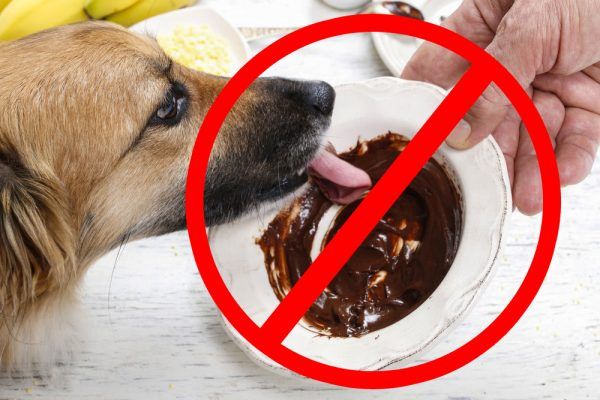

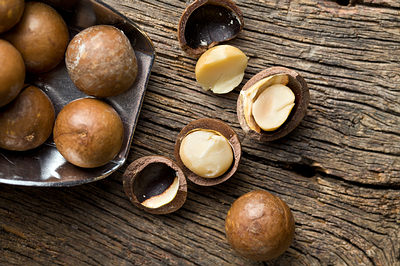
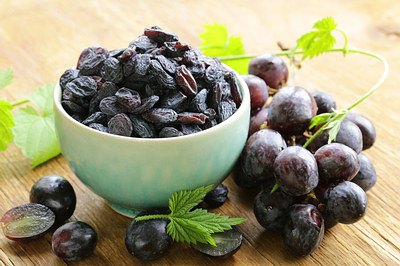
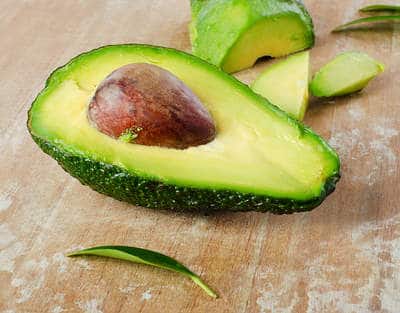


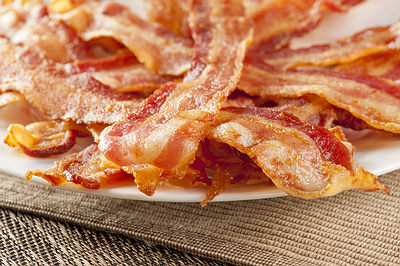


ไม่มีความคิดเห็น:
แสดงความคิดเห็น